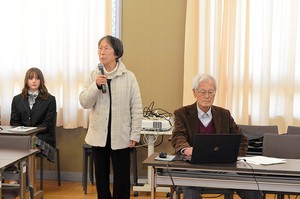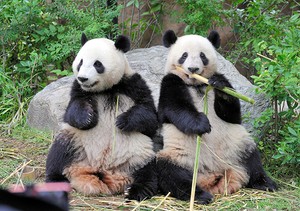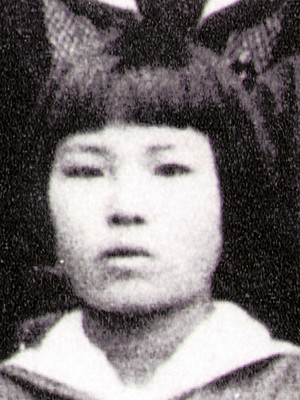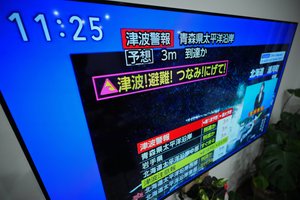By NEN SATOMI/ Staff Writer
January 15, 2023 at 06:30 JST
Tokyo and Beijing made arrangements behind the scenes in 1991 with an eye toward China signing the Nuclear Nonproliferation Treaty, according to newly released diplomatic documents.
These developments, detailed in a number of papers released by the Foreign Ministry on Dec. 21, 2022, led China to reveal the acceptance of the treaty during then Prime Minister Toshiki Kaifu’s visit to Beijing in August 1991.
These came two years after the Chinese Communist Party’s bloody military crackdown on pro-democracy protesters in Tiananmen Square.
Group of Seven industrialized countries were stepping up their criticism of Beijing’s human rights issues, and it was the first time for a global leader from the G-7 nations to travel to China since the incident.
China saw its economy grow during the 1980s under its reform and open door policy, deepening its bonds with Japan, the United States and other countries extending support.
New yen loans were, however, frozen due to what was widely portrayed as a massacre.
At a G-7 summit in 1990, Kaifu announced plans to resume the loan program in a gradual attempt to stop China from being isolated further.
A document drafted in April 1991 and sealed as “secret” recorded Japan’s briefing for Western nations on the result of Foreign Minister Taro Nakayama’s trip to China that month. It reads that Japan touched on Kaifu’s visit to China and said, “There has not been any particular objection so far.”
According to a document dated May 8, 1991, that was worked out by the Foreign Ministry’s China Division, a precondition still remained: the “understanding by summit participants, particularly the United States, must be won.”
Beijing was at the time making a spate of requests for Kaifu’s visit to China. It was also asking that the Japanese emperor visit afterward, underscoring the nation’s hope of easing the worldwide condemnation of its crackdown.
The 1991 paper from the China Division revealed that Tokyo and Beijing had already started talks in April over the possibility of China’s tightening of arms control in line with the global trend during the Japanese foreign minister’s visit to China.
The document states: “The problems concerning the nonproliferation of weapons of mass destruction as well as the MTCR (Missile Technology Control Regime) should be put on the table for discussions again in the Japan-China foreign minister meeting as the U.S. side expects that.”
Tokyo was expected to reach out to Beijing as part of its “contribution to the international community,” after Washington bolstered its weaponry control as the Gulf War broke out following the end of the Cold War.
Records also showed the Japanese side was embarrassed by China’s ambiguous attitude while the date of Kaifu’s trip was approaching.
The Japanese Ambassador to China, Hiroshi Hashimoto, met with Beijing’s Foreign Minister Qian Qichen on July 30, 1991, saying, “We will appreciate it if China expresses an aggressive, positive stance toward, in particular, signing the NPT at our summit.”
Qian simply expressed “full understanding of the great interest in the nuclear issue of Japan--the sole country that has experienced nuclear bombings.”
Sakutaro Tanino, head of the Japanese Foreign Ministry’s Asian Affairs Bureau, likewise held talks on Aug. 1, 1991, with Tang Jiaxuan, a Chinese senior diplomat to Japan.
“China’s positive step will be a major key to the success for Kaifu’s visit. We would like you to make it especially clear that your state will join the NPT,” Tanino is quoted as saying in the records.
Even at that time, Japan could not be sure of a positive response from China. A document dated Aug. 9, 1991, on the talking points for the news conference by Kaifu reads, “They may change depending on the Chinese reaction,” only for the arms control area.
Kaifu arrived in Beijing on Aug. 10, 1991, to see Premier Li Peng at the Great Hall of the People.
According to the diplomatic documents, Kaifu there pointed to the fact that China was the only state that had yet to announce its signing of the NPT among the five recognized possessors of nuclear weapons.
“Your state’s crucial decision to sign the NPT will be like completing the eyes of a painted dragon (an old saying to finish a creation),” said Kaifu, according to one of the documents.
In an extremely rare remark of its kind, Li replied that China “has already decided basically to work under the NPT” and that it “will pose no problem that Japan announces the decision right after this.”
Li, though, did not forget to make a request in return for the sake of his nation, asking that Tokyo should “reach out to the nation that possesses nuclear weapons but has not declared it will never launch pre-emptive strikes using them.”
Washington did not deny the likelihood of resorting to atomic weaponry for retaliatory strikes if it or its allies were attacked exclusively with conventional weapons. Japan was protected under the nuclear umbrella provided by the United States that way.
Following the summit, Tanino recounted what was going on behind the scenes before Beijing’s official announcement of signing the NPT.
“We have been discussing it since the spring or so,” Tanino told news reporters. “The Chinese side coincided its announcement with the visit by Kaifu. We feel that came out of consideration to us.”
The Japanese side showed consideration as well.
Kaifu admired Beijing’s “approach to overcome the 6/4 incident” in Tiananmen Square during his meeting with the CCP’s General Secretary Jiang Zemin.
Speaking at a news conference, Kaifu emphasized that “next year should offer a good opportunity to further foster Japan-China ties in the 20th anniversary of the normalization of our diplomatic relationship.”
Things started clicking after that, with the first Japanese emperor’s visit to China in sight.
Emperor Akihito visited China in October 1992 during the administration of Prime Minister Kiichi Miyazawa, Kaifu’s successor.
***
This article is a part of a series based on diplomatic documents declassified by Japan’s Foreign Ministry in December 2022.




















A peek through the music industry’s curtain at the producers who harnessed social media to help their idols go global.
A series based on diplomatic documents declassified by Japan’s Foreign Ministry
Here is a collection of first-hand accounts by “hibakusha” atomic bomb survivors.
Cooking experts, chefs and others involved in the field of food introduce their special recipes intertwined with their paths in life.
A series about Japanese-Americans and their memories of World War II